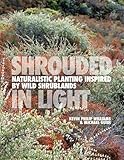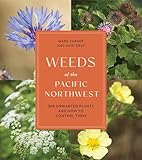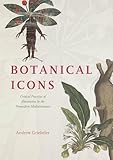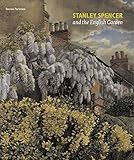I hate seeing “ultimate” in any book title. There are many good books on almost every gardening topic. How can one deserve this designation above all the rest?
I had the privilege this winter of sitting on the committee deciding the American Horticultural Society’s 2025 Book Awards. As the review copies of nominated books arrived, my bias caused me to immediately downgrade “The Ultimate Guide to Houseplant Propagation” by Lindsay Sisti.
 Fortunately, the rigor of the committee required me to spend much more time with this new book – and I discovered it’s a treasure! I recommend it for anyone who has a pandemic induced houseplant collection, and even those with a long-standing indoor forest of green.
Fortunately, the rigor of the committee required me to spend much more time with this new book – and I discovered it’s a treasure! I recommend it for anyone who has a pandemic induced houseplant collection, and even those with a long-standing indoor forest of green.
If your propagation skills are like mine, they aren’t much beyond sticking a leafy stem, broken by accident, into a glass of water and hoping. While this can work, the author provides many more ways to increase your plants with greater success. I also appreciated her insights into different soil mixes, and the tools that can make your work easier. For example, I hadn’t realized the value of a magnifying lens as a gardening tool.
Most of the examples use asexual propagation, but there is a chapter on creating your own hybrids from the seeds of flowering plants, using anthuriums (Anthurium sp.) as the model. Another chapter works through the details of increasing succulents; a process distinct from most typical houseplants.
This is not a selection guide, but it does feature several of the more popular choices as examples. It also has hints for dealing with a plant that is not thriving, including freeing a pot bound underperformer, or even saving a diseased favorite.
While I haven’t changed my opinion about the use of the word ultimate, I think that author Sisti has come close to that ideal. The AHS committee agrees, giving her book one of the 2025 Book Awards. Throughout, she uses a sometimes quirky sense of humor to engage the reader, but with an overall clear intent: “Do whatever brings you—and helps you spread—joy . . . and plants!”
Reviewed by: Brian Thompson on February 10, 2025
Published in Garden Notes: Northwest Horticultural Society, Spring 2025
 This is not your typical gardening book. There is little specific guidance on how to select, plant, and maintain shrubs. Instead, the authors want you to understand the aesthetic and ecological dynamics of wild landscapes prominently featuring shrubs. Taking this a step further, they encourage embracing these plant communities in an almost spiritual sense. “Let’s bring shrubby chaos into the garden and be shrouded in its light.”
This is not your typical gardening book. There is little specific guidance on how to select, plant, and maintain shrubs. Instead, the authors want you to understand the aesthetic and ecological dynamics of wild landscapes prominently featuring shrubs. Taking this a step further, they encourage embracing these plant communities in an almost spiritual sense. “Let’s bring shrubby chaos into the garden and be shrouded in its light.” Author Sami Gray had an important role in the third edition (2019) of “
Author Sami Gray had an important role in the third edition (2019) of “ What makes this remarkable is these are all people who have garnered considerable expertise. While focused on the UK, this is an advantage to Pacific Northwest gardeners, as most of the plants will thrive here, too.
What makes this remarkable is these are all people who have garnered considerable expertise. While focused on the UK, this is an advantage to Pacific Northwest gardeners, as most of the plants will thrive here, too. Today, I would look at this garden with different eyes. Fortunately, I can do that with the 2023 publication of “Foggy Bottom: A Garden to Share” by Adrian Bloom. My impression now is a garden well-balanced between woody and herbaceous, conifer and broad-leaf, evergreen and deciduous. The brash colors have mellowed, as to be expected from a more mature garden and gardener.
Today, I would look at this garden with different eyes. Fortunately, I can do that with the 2023 publication of “Foggy Bottom: A Garden to Share” by Adrian Bloom. My impression now is a garden well-balanced between woody and herbaceous, conifer and broad-leaf, evergreen and deciduous. The brash colors have mellowed, as to be expected from a more mature garden and gardener. For example, the June 2023 issue included an article titled “The Irises of Benton End,” describing the hybridizing efforts of artist Cedric Morris (1889-1982) at his home in eastern England. Written by Sarah Cook, who maintains the largest collection of Morris’ hybrids, the article includes photographs of all the 28 known survivors, along with the derivations of their names, including of friends, favorite places, and resident cats.
For example, the June 2023 issue included an article titled “The Irises of Benton End,” describing the hybridizing efforts of artist Cedric Morris (1889-1982) at his home in eastern England. Written by Sarah Cook, who maintains the largest collection of Morris’ hybrids, the article includes photographs of all the 28 known survivors, along with the derivations of their names, including of friends, favorite places, and resident cats. Therefore, I was skeptical when learning about a new book titled “Orchid Muse.” Did we really need an addition to the already bulging shelves on this plant family? My mind changed only after reading praise for the book by Doug Holland, Director of the Peter Raven Library at the Missouri Botanical Garden, who described it as “a happy reminder of why I fell in love with plants and the history of botany.”
Therefore, I was skeptical when learning about a new book titled “Orchid Muse.” Did we really need an addition to the already bulging shelves on this plant family? My mind changed only after reading praise for the book by Doug Holland, Director of the Peter Raven Library at the Missouri Botanical Garden, who described it as “a happy reminder of why I fell in love with plants and the history of botany.” a lasting impression” she provided was extensive and quite varied. Many are in her personal collection.
a lasting impression” she provided was extensive and quite varied. Many are in her personal collection. before she went, I asked about her favorite books in the Miller Library collection. I was not surprised that the list of books “that have made a lasting impression” she provided was extensive and quite varied. Many are in her personal collection.
before she went, I asked about her favorite books in the Miller Library collection. I was not surprised that the list of books “that have made a lasting impression” she provided was extensive and quite varied. Many are in her personal collection. before she went, I asked about her favorite books in the Miller Library collection. I was not surprised that the list of books “that have made a lasting impression” she provided was extensive and quite varied. Many are in her personal collection.
before she went, I asked about her favorite books in the Miller Library collection. I was not surprised that the list of books “that have made a lasting impression” she provided was extensive and quite varied. Many are in her personal collection.